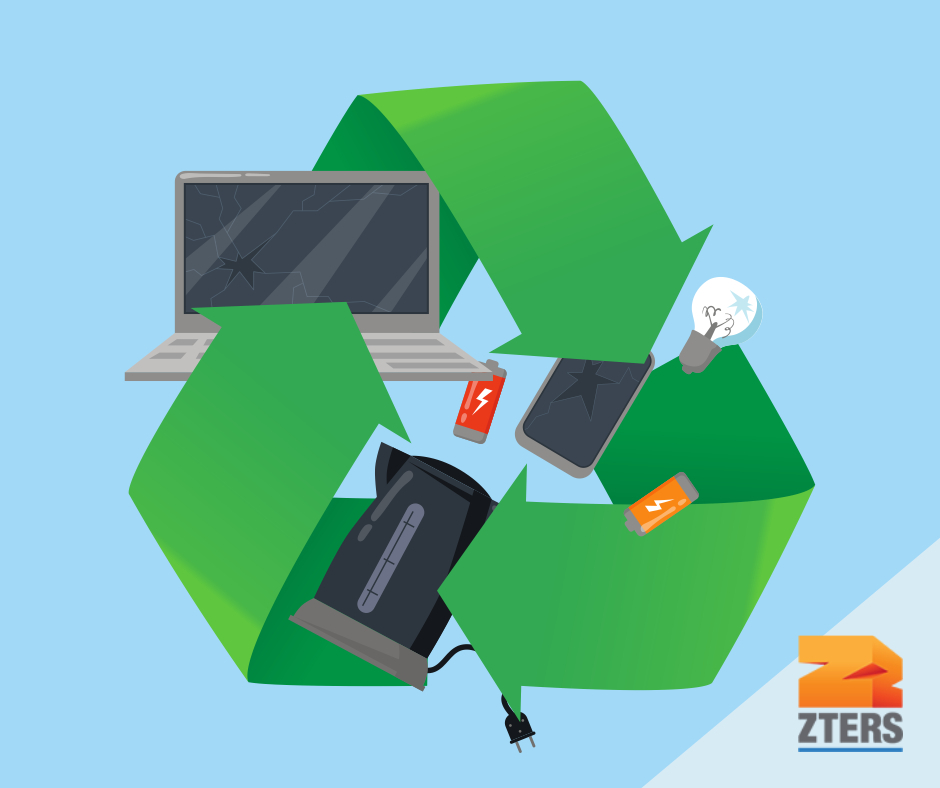Take a moment to consider how many electronic devices you own—maybe just how many are in the room with you right now. A TV? Phone? Computer? Printer? The point is, electronics are a major part of our lives and environment.
However, with all the rapid upgrades (and planned obsolescence), a significant challenge has emerged: electronic waste, commonly known as e-waste. It’s important to understand what e-waste is and how to handle it so that we can adopt more sustainable waste management practices.
Common Examples of E-Waste
E-waste includes a wide variety of electronic products that are no longer usable or wanted. These can range from personal gadgets to large appliances and business equipment. While many people associate e-waste with computers or phones, it actually encompasses far more:
- Desktop computers and laptops
- Mobile phones and tablets
- Televisions and monitors
- Printers, scanners, and fax machines
- Keyboards, mice, and computer accessories
- VCRs, DVD players, and stereos
- Video game consoles
- Microwaves and small kitchen appliances
- Refrigerators and washing machines
- Rechargeable batteries and battery backup systems
Many of these items contain valuable materials—like copper, aluminum, and rare earth metals—that can be recovered and reused. However, they also contain hazardous elements, which is why proper disposal is essential.
You might note a great deal of overlap between the above list and items that are not allowed in a roll-off dumpster. If you’re ever uncertain about proper disposal methods, give us a call.
The Environmental Impact of E-Waste
When e-waste is poorly managed, it can lead to significant environmental degradation. Electronic devices that end up in landfills can lead to toxic substances that may leach into the ground, affecting ecosystems and potentially entering the food chain. Beyond that, incinerating e-waste releases harmful pollutants into the air, which contributes to air quality issues and climate change.
Understandably, addressing e-waste is an integral component of larger environmental waste management strategies. Electronic devices have a large environmental footprint, but there are steps we can take to reduce it—even on an individual level. Staying informed is one of those steps.
E-Waste Management Strategies
So, what can we do to effectively manage e-waste? More than you think. There are several key practices in effective e-waste management, including but not limited to:
Recycling Programs
Certified e-waste recycling programs help ensure that electronic devices are dismantled and processed safely, recovering valuable materials and preventing environmental contamination.
Many states’ municipal websites include directories with electronic recycling centers as well as educational materials to help you stay informed on proper disposal. For example, here’s information on electronic recycling in Texas.
Manufacturer Take-Back Initiatives
Many electronics manufacturers offer take-back programs, allowing consumers to return old devices for proper recycling. Best Buy’s recycling program allows you to recycle up to three items per household per day.
Need some larger electronic items hauled? ZTERS has you covered with professional junk removal services near you.
Donations and Reuse
Extending the life of electronic devices through donations to schools, non-profits, or refurbishing centers can reduce the volume of e-waste generated.
Businesses can also benefit from conducting waste audits to assess their e-waste generation and identify opportunities for improvement. ZTERS offers comprehensive waste audit services to help organizations develop effective waste management plans. Learn more about commercial waste services at ZTERS.
Regulatory Framework and Compliance
The EPA’s National Recycling Strategy outlines goals for improving recycling infrastructure and reducing waste, including e-waste. Here’s the EPA’s e-waste page. The page goes into detail on e-waste and how the US government works to combat the environmental detriment of electronic waste.
Not only is it ethically sound to comply with best practices, but it is also necessary to avoid any hefty penalties.
The Role of Technology in E-Waste Management
It might sound counter-intuitive, but there are ways to fight technology waste with technology. These innovative solutions aim to more efficiently deal with e-waste on a large scale. For instance, smart waste technologies, such as dumpster cameras and data analytics, enable more efficient tracking and collection of electronic waste. These tools can optimize pickup schedules, reduce operational costs, and enhance recycling rates.
At ZTERS, we leverage such technologies to provide clients with tailored waste management solutions. It’s part of our environmental responsibility to help optimize waste streams and empower your business to reach its sustainability goals.
Final Thoughts: E-Waste
E-waste presents a growing challenge in our increasingly digital world. By understanding its implications and implementing effective management strategies, individuals and businesses can mitigate environmental risks and contribute to a more sustainable future.
Partnering with an experienced waste management provider like ZTERS can help you stick to responsible e-waste practices.

